Ingrowing eyelashes
- Home
- Ingrowing eyelashes
Ingrowing eyelashes
What is it?
When eyelashes grow in the wrong direction, toward the eye. Eyelashes naturally grow forward, away from the eye. Some eye conditions change the orientation of the eyelash follicles. The lashes now grow backward towards the eye and result in irritation, discomfort, watering, light sensitivity and even infection. Usually there are only a few affected lashes. There is a similar condition, called entropion, that causes all the lashes in the lower lid to face the eye. These lashes are not ingrowing but are facing the wrong direction because the lid has rolled over and all the lashes now face backwards. Entropion results from a problem with the eyelid, not the eyelashes. More information about entropion is available here.Do I have it?
Several ocular conditions may result in the symptoms described above but ingrowing lashes tend to be more persistent and irritating. If the lashes are large and you have a good mirror you may be able to see the offending lash. Frequently, though, these lashes are quite fine and can only be seen on slit lamp examination. If you are unsure you can ask your ophthalmologist or optometrist to check and they are usually able to remove them for you.
What causes it?
Scarring of the eyelid margin may cause a change in the orientation of the eyelash follicle. This will change the direction in which the lash grows from the lid margin and frequently these lashes grow towards and cause damage to the surface of the eye. More information is available here.
Causes of ingrowing lashes (Trichiasis)
A range of conditions may result in scarring of the eyelid margin. Several of these, including trauma and chemical burns to the eyelid, are straight forward and easy to diagnose but, unfortunately, they are often very difficult to treat. There are a few systemic conditions that result in scarring of the conjunctiva and may lead to trichiasis. These conditions are relatively rare. The cold sore virus (Herpes Simplex Virus) commonly causes sores on the lips in susceptible individuals. It may also cause ulcers and inflammation in the eye which can lead to trichiasis. The majority of cases of trichiasis are caused by chronic low-grade inflammation of the eyelids. Blepharitis is a common condition that is frequently associated with inflammation and is responsible for a significant proportion of trichiasis cases. More information about blepharitis can be found here.How is it treated?
There are broadly two treatment options.
Simply pull the lashes out with a pair of tweezers (known as epilation).
It is a perfectly acceptable treatment and works well. As long as all the problematic lashes are removed the symptoms will resolve.
Unfortunately, the hair follicle isn’t affected by this treatment and consequently the lashes will regrow. They will regrow in the same orientation and the symptoms will return, usually within a couple of weeks. You can then have them epilated again, and many people do. This cycle will repeat indefinitely.
Destroy the lash follicle.
This is clearly more invasive treatment and is performed under local anaesthesia. However, the lashes will not return after the follicles have been affectively treated.
Invasive treatment includes electrolysis, cryotherapy and surgery and more information can be found here.
- Electrolysis. This involves destruction of the follicle to prevent the lash from regrowing. It is the preferred procedure when there are a small number of misdirected lashes although larger areas can also be treated. The procedure is performed in the clinic and requires a small local anaesthetic injection into the affected eyelid. A short probe, the same size as an eyelash, is inserted next to the lash into the follicle. The treatment destroys the follicle without affecting the surrounding lid or lashes.
- Cryotherapy. This was used frequently in the past but has more complications than electrolysis and is rarely used in our practice. It is effective in destroying the follicles but is indiscriminate and destroys all follicles in the treatment zone, resulting in large bare patches on the lid margin. It may also damage the tarsal plate, which is the firm, structural component of the eyelid, thereby increasing the risk of secondary lid malposition. The skin pigmentation may also be altered resulting in either a dark or pale patch in the area that has been treated.
- Surgery. The previous treatment options are targeted at isolated lashes or patches of lashes that are misdirected in a lid that is otherwise normal. The entire lid margin may rotate, either forward (away from the eye) or backward (towards the eye). When it rotates backwards the entire row of lashes rubs on the eye (see entropion). This is not only uncomfortable but may result in corneal ulceration. The lashes are not misdirected and do not need to be removed (These are not actually ingrowing lashes at all, but appear to be ingrowing, and cause similar symptoms which is why I mention them here). The lid margin is misdirected and can only be corrected with surgery. The treatment is very effective and does not result in the loss of any lashes.






